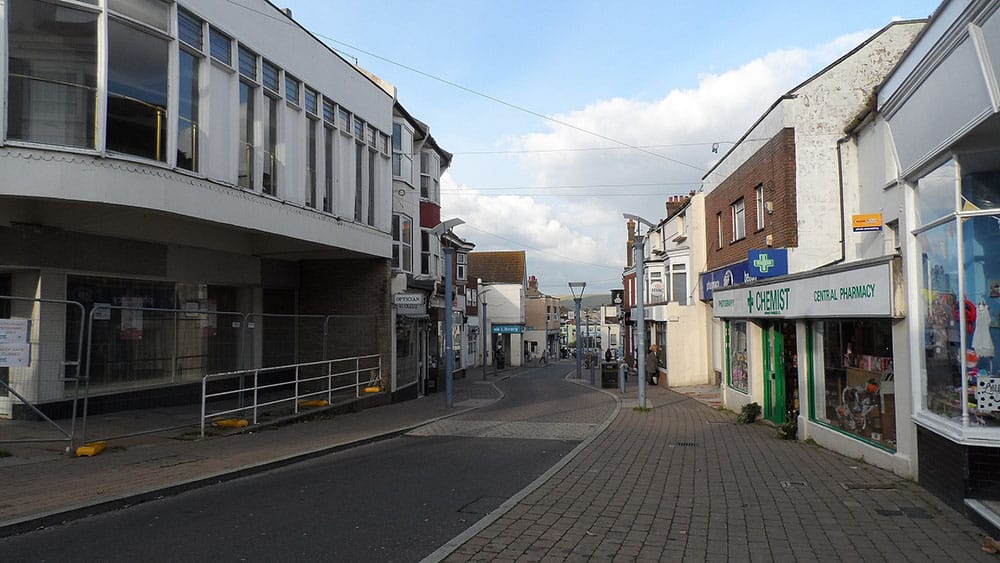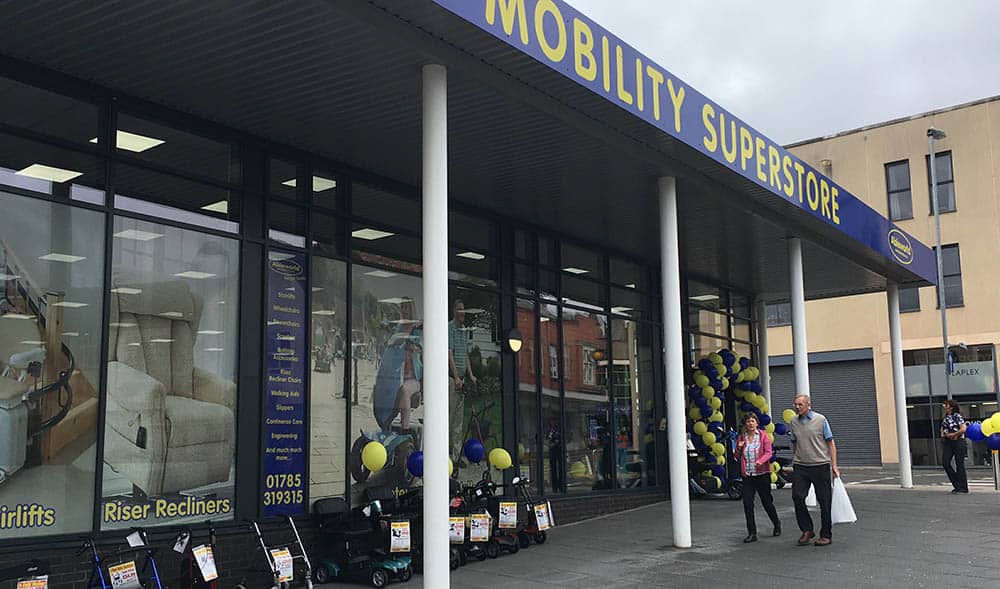FREEZE: Calls for freeze in business rates amid four-year high vacancy rates and falling footfall

Retail parks have proven resilient following a tough retail trading period from the 30th June to 27th July 2019, adding weight to Ableworld’s Mike Williams’ suggestion that retail parks may be the future for mobility retail.
The number of retail spaces sitting empty in town centres across the UK hit its highest level since January 2015 at 10.3 percent in July 2019, alongside the worst decline in footfall for July since 2012.
The July retail statistics from consumer research and data analysis specialists Springboard continues to highlight the struggle facing high streets up and down the UK to attract shoppers, increasing the pressure on retailers across multiple sectors, including mobility.
According to the data, the national town vacancy rate increased slightly on the previous quarters rate of 10.2 percent whilst retail footfall declined by 1.9 percent in July, compared to the same point last year when it declined by 0.9 percent.
High street footfall and shopping centre footfall saw the most substantial decreases, with high street footfall declining by 2.7 percent, compared to the increase of 0.3 percent in July last year. The three-month average decline for high street footfall is 4.0 percent.
Shopping Centre footfall declined by 3.1 percent against July 2018’s decline of 3.4%, with the three-month average decline being 3.0 percent.
Helen Dickinson OBE, Chief Executive of the British Retail Consortium, said: “Retailers have faced a challenging environment this month, with declines in footfall on High Streets and Shopping Centres. Sluggish sales growth and declining footfall also contributed to the rise in town centre vacancies, which rose to their highest level since January 2015.
“High streets and town centres play an important part in our local communities, and we should be concerned by the rise in empty storefronts.”
Despite high streets and shopping centres experiencing falling numbers of shoppers visiting stores, the outlook was more positive for retailers in Britain’s retail parks, with footfall increasing in July 2019 by 1.2 percent, following a 0.5 percent drop in the same period last year.
Over a three-month average, retail park footfall saw a slight increase by 0.2 percent.
At the launch of its new Stafford store in June, Mike Williams, Managing Director of Ableworld, told THIIS that the company was focusing on opening new stores in retail parks, suggesting that retail parks and mobility outlets are a natural fit.

“I’ve always thought that the way retail in the mobility market is moving, there will be a B&M, a Boots store, a DIY store and a mobility store in most retail parks. It is a natural way for the market to go.”
A call to freeze business rates
In response to the difficult trading landscape facing retailers on high street and in shopping centres, Helen has called for the Government to intervene to plug the number of retailers retreating from town centres.
“If the Government wishes to avoid seeing more empty shops in our town centres then they must act to relieve some of the pressure bearing down on the high street. Currently, retail accounts for 5 percent of the economy, yet pays 10 percent of all business costs and 25 percent of all business taxes,” she commented.
“The rising vacancy figures show this is simply not sustainable. We need an immediate freeze in rates, as well as fixing the Transitional Relief, which leads to cornershops in Redcar subsidising banks in central London.”
Giving more insight into July’s weak performance, Diane Wehrle, Springboard Marketing and Insights Director, noted that 2019’s figures stand in contrast to July 2018 when the country experienced better weather but says the statistics point to a deeper underlying and systemic issue than just the weather.
“July was a much more challenging month for high streets and shopping centres than for out of town destinations,” she explained.
“Some of the -2.7 percent drop in high street footfall was a consequence of a strong comparable of +0.3 percent last year when we had a continuous period of hot sunny weather, but for shopping centres – with the -3.1 percent drop being as almost as severe as the -3.4 percent drop in footfall last year – the weather clearly has less impact on footfall than the challenges created by the ongoing structural change in retailing.
“Indeed, the ongoing challenges faced by bricks and mortar destinations is reflected in the rising vacancy rate, which has increased in every quarter since January 2018 and now sits at 10.3%.
Retail parks vs town centres
Examining the difference between retail parks and town centre retail operations, Diane highlighted features such as click and collect and free parking are making the out-of-town experience more attractive to shoppers.
“Consumer demand is ever more polarised between convenience and experience, and the stronger performance of out of town destinations where footfall rose by +1.2% in July reflects the fact that retail parks are successfully bridging the convenience-experience gap,” she emphasised.
“They not only offer consumers accessible shopping environments with free parking and easy click and collect opportunities for online purchases, but many also combine this with an enhanced experience that includes coffee shops and casual dining restaurants, and some also have leisure facilities.
“The attraction of retail parks was demonstrated clearly in the last week of the month when temperatures reached record levels. With temperatures peaking at nearly 40 degrees on the Wednesday and Thursday of that week, footfall in high streets and shopping centres declined by an average of -7% on those two days, but only by -0.5% in retail parks. Indeed, the positive footfall result for out of town destinations in July, particularly the fact that footfall rose by +2.1% during day time trading hours, demonstrates that if the offer is right consumers will spend.”
Her comments closely reflect those of Ableworld’s Mike Williams, who noted that importance of convenient, free parking for retail success in the August issue of THIIS Magazine.
https://thiis.co.uk/freeze-calls-for-freeze-in-business-rates-amid-four-year-high-vacancy-rates-and-falling-footfall/https://thiis.co.uk/wp-content/uploads/2019/02/High-street.jpghttps://thiis.co.uk/wp-content/uploads/2019/02/High-street-150x150.jpgNewsroomRetailer NewsAbleworld,BRC,british retail consortium,Diane Wehrle,footfall,High Street,Mike Williams,mobility dealer,mobility retailer,springboard,Stafford,town centre,vacancy ratesRetail parks have proven resilient following a tough retail trading period from the 30th June to 27th July 2019, adding weight to Ableworld’s Mike Williams' suggestion that retail parks may be the future for mobility retail. The number of retail spaces sitting empty in town centres across the UK hit...Calvin BarnettCalvin Barnettcalvin.barnett@bhta.comAuthorTHIIS Magazine

